Discover 20 hidden attractions, cool sights, and unusual things to do in Troy (United States). Don't miss out on these must-see attractions: Experimental Media and Performing Arts Center, Rensselaer County Historical Society, and Oakwood Cemetery. Also, be sure to include Joseph L. Bruno Stadium in your itinerary.
Below, you can find the list of the most amazing places you should visit in Troy (New York).
Table of Contents
Experimental Media and Performing Arts Center
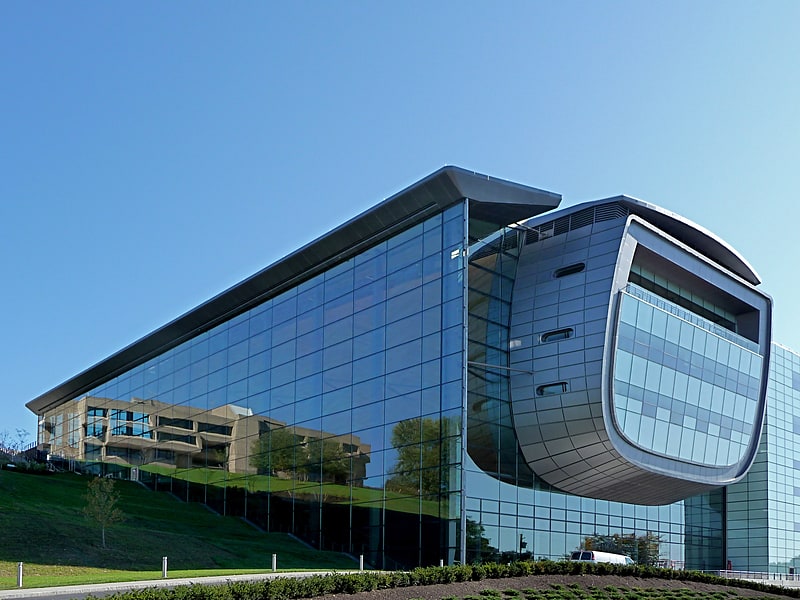
Building in Troy, New York. The Curtis R. Priem Experimental Media and Performing Arts Center is a multi-venue arts center at Rensselaer Polytechnic Institute in Troy, New York, which opened on October 3, 2008. The building is named after Curtis Priem, co-founder of NVIDIA and graduate of the RPI Class of 1982, who donated $40 million to the Institute in 2004.[1]
Address: 110 8th St, 12180-3522 Troy
Rensselaer County Historical Society
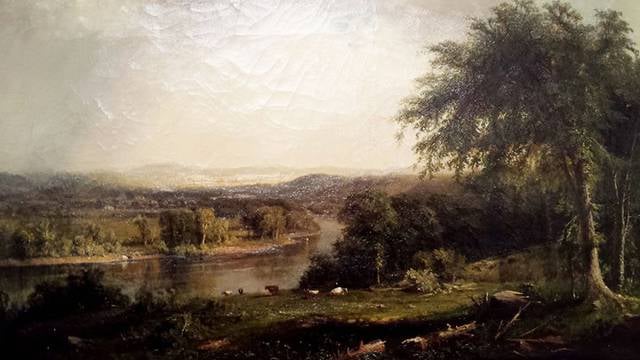
Museum in Troy, New York. The Rensselaer County Historical Society is a non-profit, historical society and museum, to promote the study of the history of the Rensselaer County, NY. RCHS was founded in 1927, and originally operated out of a single room in the Troy Public Library, collecting manuscripts and published materials related to the county's history. It is located in the Central Troy Historic District, in Troy, NY. The Rensselaer County Historical Society operates a museum, and offers public programs from its location at 57 Second Street, Troy, NY.[2]
Address: 57 2nd St, 12180-3928 Troy
Oakwood Cemetery
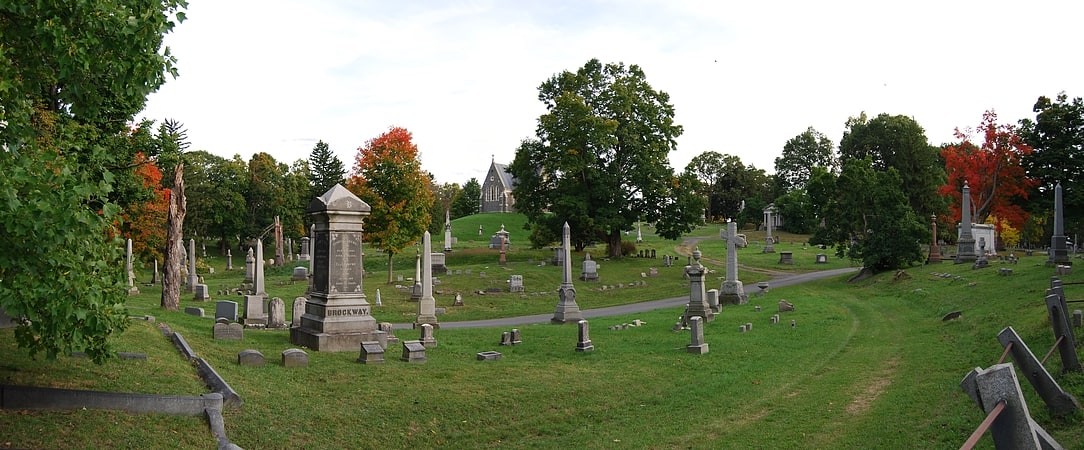
Cemetery in Troy, New York. Oakwood Cemetery is a nonsectarian rural cemetery in northeastern Troy, New York, United States. It operates under the direction of the Troy Cemetery Association, a non-profit board of directors that deals strictly with the operation of the cemetery. It was established in 1848 in response to the growing rural cemetery movement in New England and went into service in 1850. The cemetery was designed by architect John C. Sidney and underwent its greatest development in the late 19th century under superintendent John Boetcher, who incorporated rare foliage and a clear landscape design strategy. Oakwood was the fourth rural cemetery opened in New York and its governing body was the first rural cemetery association created in the state.
It features four man-made lakes, two residential structures, a chapel, a crematorium, 24 mausolea, and about 60,000 graves, and has about 29 miles (47 km) of roads. It is known both for its dense foliage and rolling lawns, and has historically been used as a public park by Lansingburgh and Troy residents. Oakwood was added to the National Register of Historic Places in 1984.
Prominent Americans such as Uncle Sam Wilson, Russell Sage, and Emma Willard, at least fourteen members of the United States House of Representatives, and the founders of both Troy and Lansingburgh are buried at Oakwood. The cemetery has been said to be "one of New York State's most distinguished and well-preserved nineteenth-century rural cemeteries." It also offers a famous panoramic view of the Hudson River Valley that is said to be the "most concentrated and complete overview of American history anywhere in America".[3]
Address: 50 101st Street, Troy
Joseph L. Bruno Stadium
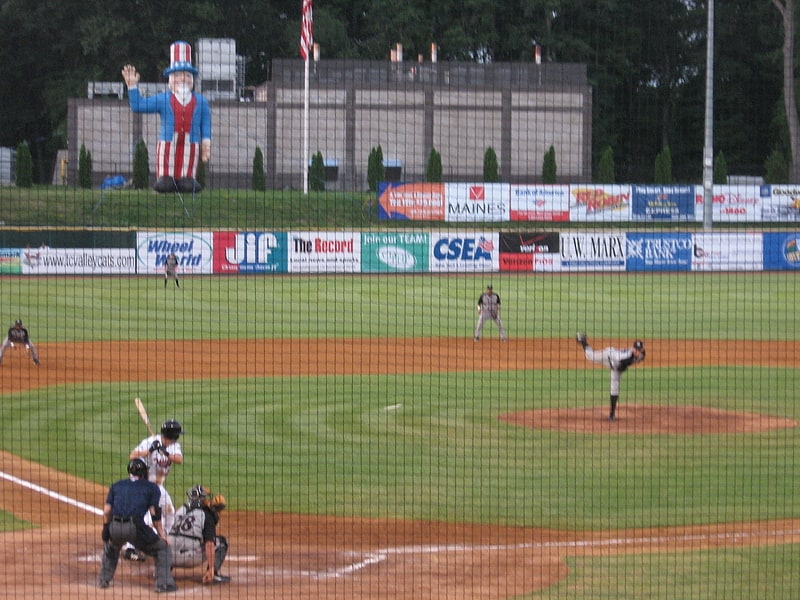
Stadium in Rensselaer County, New York. Joseph Bruno Stadium is a stadium located on the campus of Hudson Valley Community College in Troy, New York. It is the home field of the Tri-City ValleyCats minor league baseball team of the independent Frontier League and previously the New York–Penn League. Located in the center of the tri-city area of New York's Capital Region, it was named after former New York State Senate Majority Leader Joseph Bruno, who helped secure the funds for the ballpark.[4]
Address: 80 Vandenburgh Ave, 12180-6037 Troy
Troy Savings Bank Music Hall
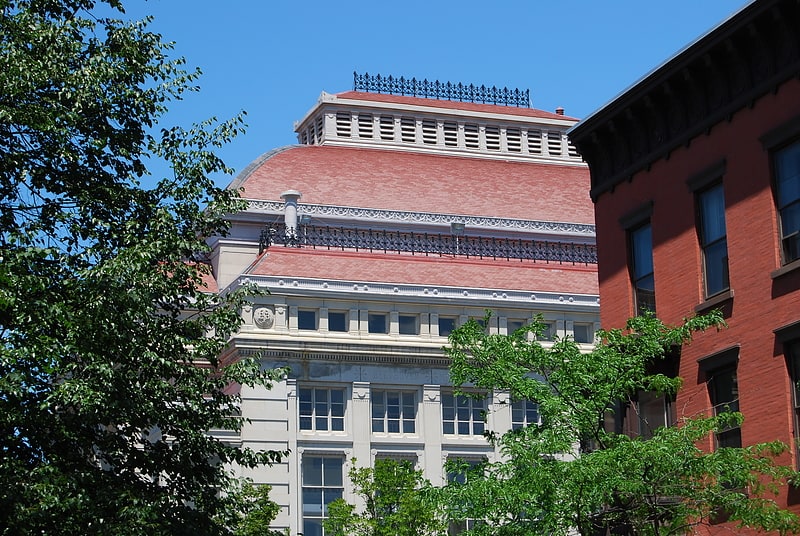
Performing arts theater in Troy, New York. Troy Savings Bank Music Hall, is a performance space in Troy, Rensselaer County, New York, United States. The music hall, renowned for its acoustics and an Odell concert organ, is operated by a not-for-profit organization. It was designated a National Historic Landmark in 1989 for its architecture as one of the finest surviving 19th-century auditoriums.[5]
Address: 30 2nd St, 12180-3292 Troy
Hart-Cluett Mansion
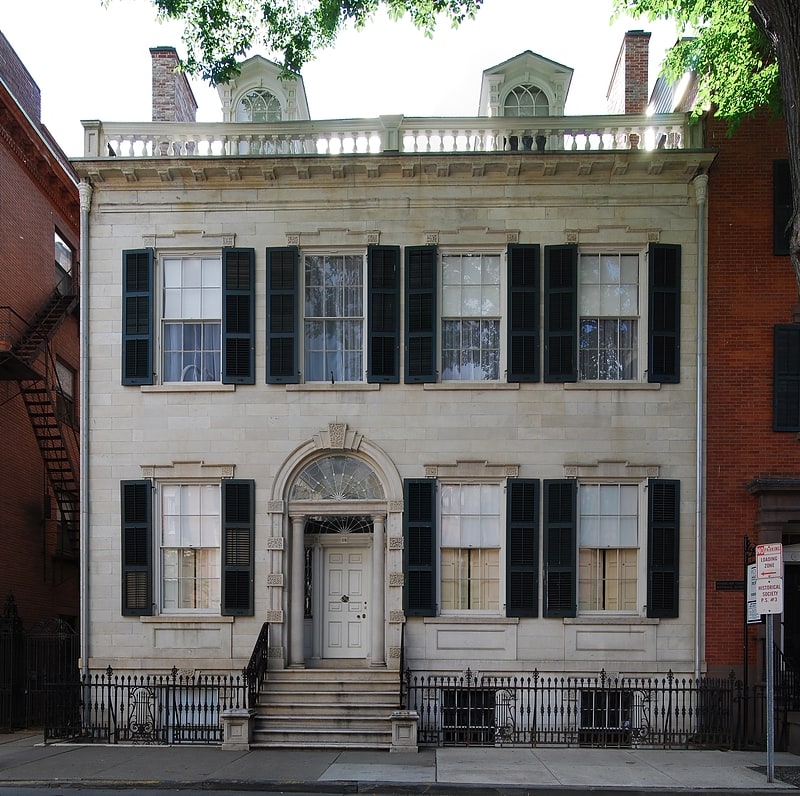
Museum in Troy, New York. The Hart-Cluett Mansion is located at 57 Second Street in Troy, New York, United States. It was listed on the National Register of Historic Places in 1973, and is a contributing property to the Central Troy Historic District created in 1986. Since the 1950s it, and the Carr Building next door, has been the main office of the Rensselaer County Historical Society, The house is open to the public as a historic house museum.
Built in 1827 from a most likely created by architect Martin E. Thompson, of New York City, it is a Federal style townhouse with decorated marble and limestone facing considered one of the best and most intact houses in that style in the city of Troy. The house was built by John Bard Colgrove, who moved to Troy, NY in 1826 to oversee the construction of the Hart House. Immediately after constructing the Hart House, Colgrove built the first Rensselaer County Court House (1828–31). It was constructed as a gift for his only child, Betsey Howard Hart, and her husband, Richard P. Hart, by wealthy New York City merchant and banker William Howard, done in a style similar to contemporary mansions there. Those homes have since been demolished, making Troy the only extant place visitors can experience an early 19th-century New York City mansion.
In the late 19th century it became the property of another local businessman, George Cluett, who expanded it in the early 20th century. In 1910, the property was sold to his nephew Albert Cluett and his wife Caroline. Caroline Cluett donated the house to the Historical Society in 1952.[6]
Houston Field House

Arena in Troy, New York. Houston Field House is a multi-purpose arena located on the campus of Rensselaer Polytechnic Institute in Troy, New York. It is the nation's third-oldest college hockey rink, behind Northeastern University's Matthews Arena and Princeton University's Hobey Baker Memorial Rink. Further, it is the second-oldest arena in the ECAC Hockey League, behind Princeton's rink. Until the opening of the Times Union Center in Albany in 1990, it was the largest arena in the Capital Region.[7]
Address: 1900 Peoples Ave, 12180-3790 Troy
Monument Square
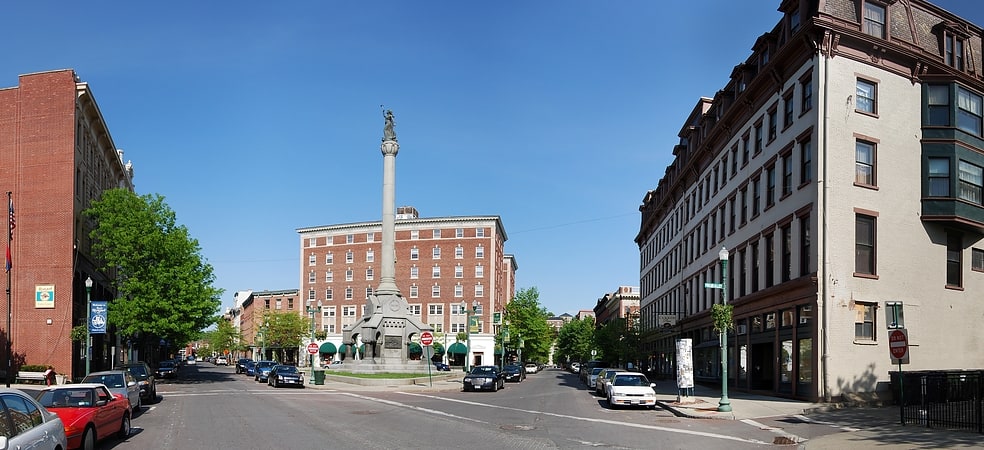
Soldiers and Sailors Monument is a war monument in Monument Square, at Broadway and 2nd Street in Troy, New York, United States. It honors those from Rensselaer County who served in the Revolutionary War, the War of 1812 and the American Civil War.
The monument is a contributing object in Central Troy Historic District.[8]
Burden Iron Works Museum
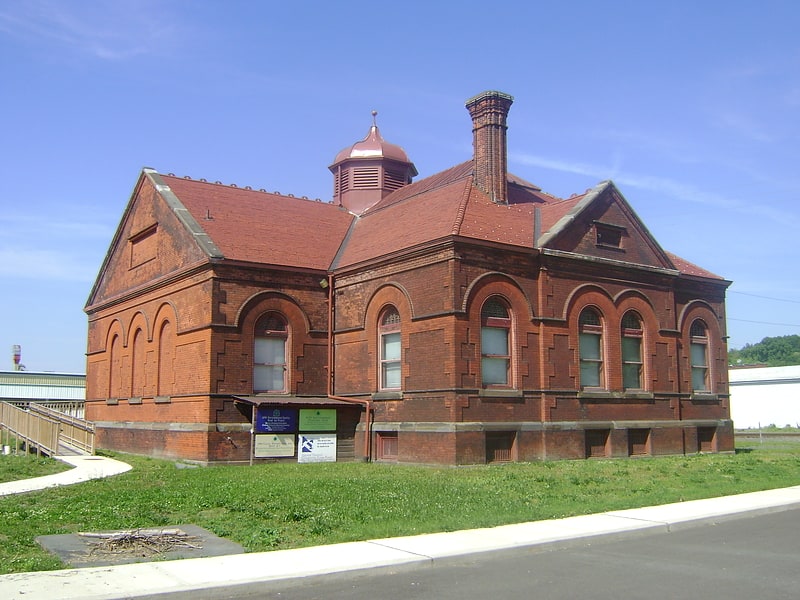
Building in Troy, New York. Burden Ironworks Office Building is a historic office building located in Troy, Rensselaer County, New York. It was built about 1880 and is a one-story, brick building laid out in a cruciform plan. It features gabled and hipped roofs and a central octagonal cupola and onion dome.
It was listed on the National Register of Historic Places in 1972.[9]
Address: Foot of Polk Street, 12180 Troy
Congregation Berith Sholom

Reform synagogue in Troy, New York. Congregation Berith Sholom is a synagogue in Troy, New York. The synagogue is the oldest continuously used synagogue in the state of New York, the second oldest house of worship in the state outside of the city of New York, and one of the oldest synagogue buildings in the United States.[10]
Address: 167 3rd St, 12180 Troy
Rice Building
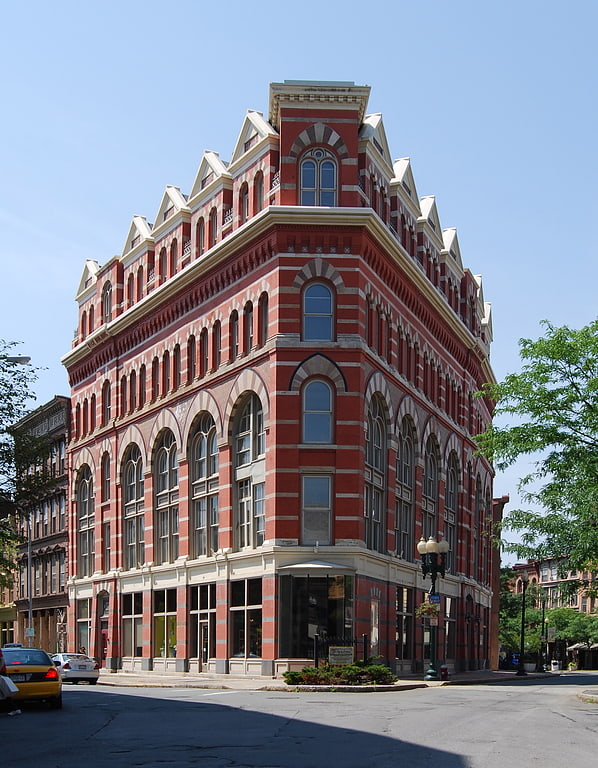
The Rice Building, originally known as the Hall Building for Benjamin Homer Hall who built it, is a triangular historic high Victorian Gothic structure with Moorish architecture window arches in Troy, New York. Built in 1871 for attorney, author, and poet Benjamin Homer Hall who served as City Clerk of Troy, it is located at 216 River Street on the corner with First Street. It has been attributed to the firm of Vaux and Withers, the partnership between Calvert Vaux and Frederick Clarke Withers after the death in a steamboat accident of Andrew Jackson Downing. More recent scholarship by a professor suggests George B. Post was the building's architect. It is part of the Central Troy Historic District.
Originally 6 stories with 3 towers on the roof, a fire damaged the top floor and it was removed along with the towers. In more recent decades, the building fell into disrepair after it was foreclosed on in the 1980s. An effort to save it was launched and it was restored in the 1990s. A nonprofit entity called Rice Building Incorporated was created to turn it into a business incubator center. With support from State Senator Joseph Bruno, New York State provided $2 million for the project. The architecture firm Lepera & Ward headed the project. Ganem Contracting was also involved in the project and photographed the work and many architectural details. The origins of the name Rice Building are not known.[11]
Barberville Falls

Hiking area in Poestenkill, New York. The Barberville Falls is a waterfall and nature preserve located in Poestenkill, New York. The fall flows into the Poesten Kill, which is a large creek that flows through Rensselaer County.[12]
Prospect Park
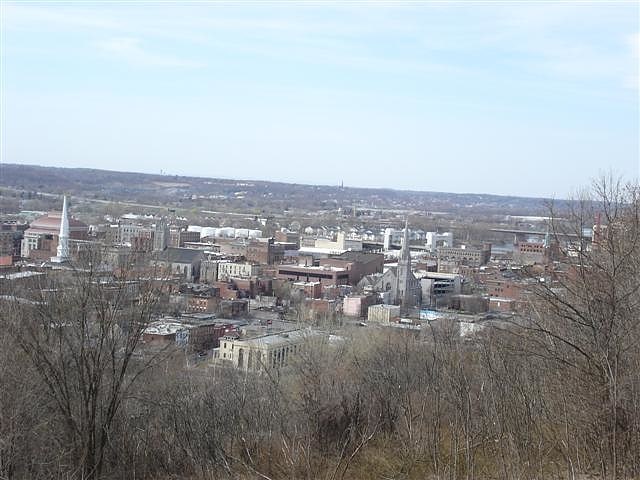
Park in Troy, New York. Prospect Park is an 80-acre city park in Troy, New York. The park is situated between Congress and Hill Street on top of Mount Ida. Prospect Park was originally designed in 1903 by local landscape engineer Garnet Douglass Baltimore, the first African-American graduate of Rensselaer Polytechnic Institute. He had also designed the 200-acre Forest park cemetery on pinewood ave in troy in 1897 which is now neglelgted and far from its picturesque days. The park started to fall into disrepair in the 1950s and relatively little of Baltimore's work is still evident in the park today.
The park today includes the following recreational areas: 14 tennis courts, 4 handball courts, 2 basketball courts, playground, picnic areas, soccer field, comfort station, spray pool, nature trail, a roadway which surrounds the park with eight parking areas, and finally uncle sam memorial pavilion which overlooks the city of Troy below.
The Uncle Sam Memorial commemorates Samuel Wilson, who owned this land. It was an open gazebo overlooking the city and the Hudson River. Inside the gazebo were panels with patriotic words inscribed ~ Honesty, Justice, Republic, Independence, Freedom, and Faith. There are three empty places where panels had been. They either fell down or were stolen. It’s likely that Honor was one of them and maybe Patriotism and Loyalty was the other two.[13]
Address: Congress St., 12180 Troy
Green Island Bridge
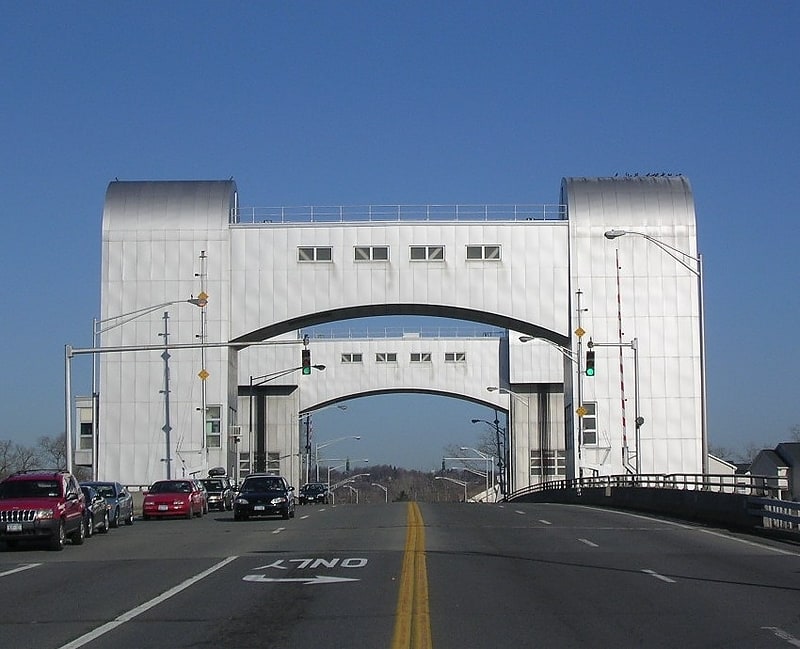
Girder bridge in Troy, New York. The Green Island Bridge crosses the Hudson River in New York, connecting Green Island with Troy, passing through Starbuck Island. It opened September 12, 1981.[14]
Church of the Holy Cross
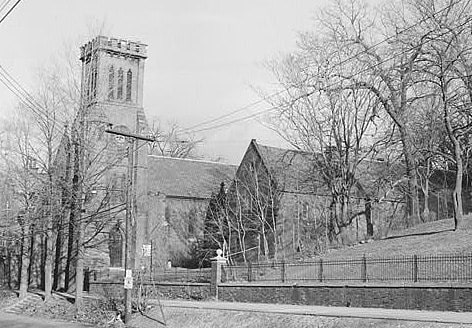
Episcopal church in Troy, New York. The Church of the Holy Cross is a church in Troy, New York, United States. It was added to the National Register of Historic Places in New York in 1973. It borders the Rensselaer Polytechnic Institute campus to the East and South.
The church was founded by Mary Warren in the early 1840s. Under the direction of Mary Warren's son, Nathan B. Warren, the church nave was built from designs by Alexander Jackson Davis in 1844. The chancel addition, by Richard Upjohn, was completed in late 1848 and dedicated in January, 1849. In 1846, the Church instituted one of the first choirs at an Episcopal church in the United States. During the full choral service, the psalter, creed and responses of the English Cathedral Service are chanted by the choir while the officiant intones his part. In 1863, the Mary Warren Free Institute was built adjoining the church to the south in order to further religious and musical instruction. The Institute still exists to this day.[15]
Address: 138 8th Avenue, Troy
Collar City Bridge
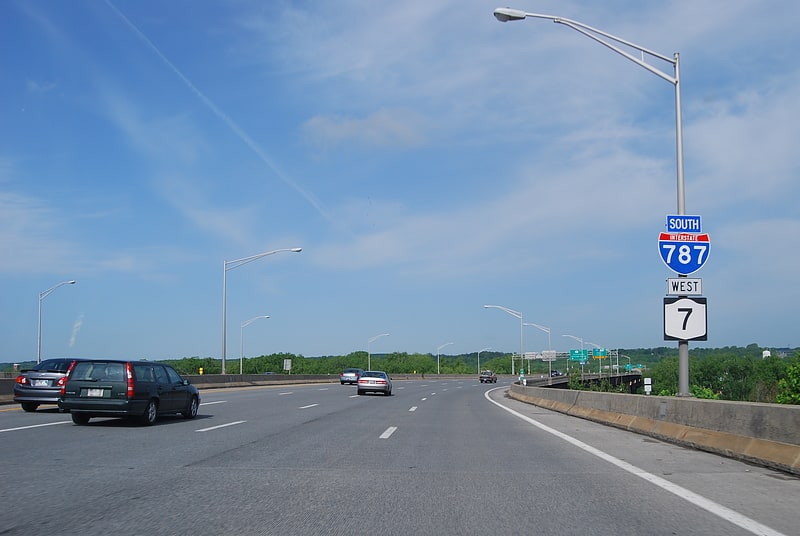
Bridge in New York State. The Collar City Bridge carries NYS Route 7 across the Hudson River connecting Colonie, New York with Troy, by way of passing over Green Island. Though the northern terminus of Interstate 787 is unclear, there is sign evidence of a concurrency at least halfway across the bridge.[16]
St. Paul's Episcopal Church
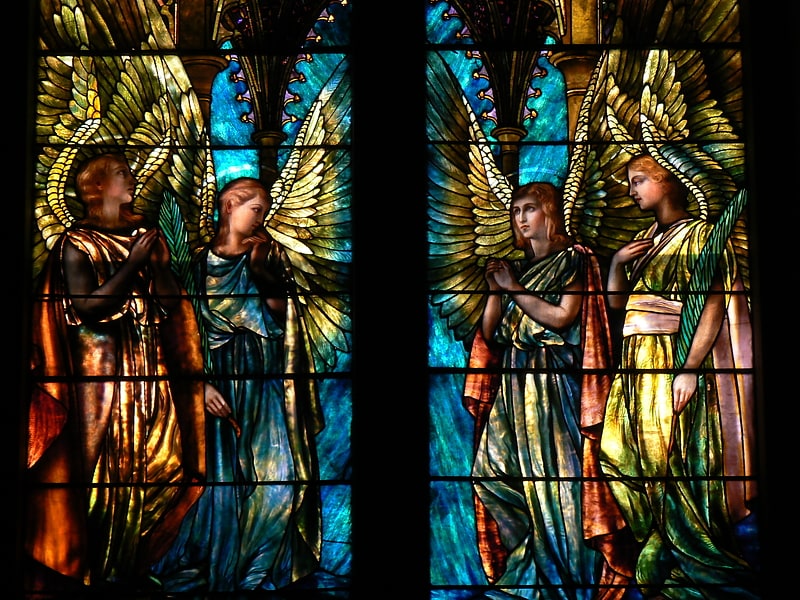
Episcopal church in Troy, New York. St. Paul's Episcopal Church in Troy, New York, United States, is located at Third and State streets. It is home to one of the oldest congregations in the city. In 1979, the church and two outbuildings were added to the National Register of Historic Places. Seven years later, when the Central Troy Historic District was created and added to the Register, it was listed as a contributing property.
St. Paul's is one of the oldest churches in Troy; the first Episcopal services were held in 1795. In 1804 St. Paul's was incorporated and a brick church erected. This was replaced in 1827-28 with the current structure. The exterior is a close copy of Trinity Church, New Haven, Connecticut (1813-1816), designed by the architect Ithiel Town in the Gothic revival style. Indeed, due to changes in the original, St Paul's is closer to Trinity's original appearance than Trinity itself. Today, the exterior of St Paul's is remarkably unchanged, but the interior underwent complete redesign in the 1890s. Balconies had caused structural problems, and the Rector, Dr. Edgar Enos, convinced the church to fund a complete interior renovation by the Louis Comfort Tiffany Company.
St. Paul's is unusual because all aspects of the design are based on a concept by the Tiffany Company: chandeliers, glass mosaics, tile work, a glass jeweled altar rail, a baptistery of wood and plaster filigree, decorative stenciling of the ceiling, walls and organ pipes, pews and support members, stunning windows by Tiffany and Tiffany artisan J.A. Holzer - indeed, nearly all interior elements. As such it is a fully integrated interior design; only four such churches done by the Tiffany Company have survived intact, and St. Paul's is arguably the finest expression of this concept.[17]
Address: 58 3rd St, Troy
St. Mark's Episcopal Church

Church in Green Island. St. Mark's Episcopal Church is a historic Episcopal church at 69-75 Hudson Avenue in Green Island, Albany County, New York. It was built in 1866–1867 in a Gothic Revival style. It is a rectangular, brick trimmed stone church building with a steeply pitched roof with three steeply pitched dormers, covered in polychrome slate. The front gable features three pointed Gothic windows and a rose window. It also has a stone bell tower. The two story brick rectory was added in 1883–1884.
It was listed on the National Register of Historic Places in 1978.[18]
Congress Street Bridge
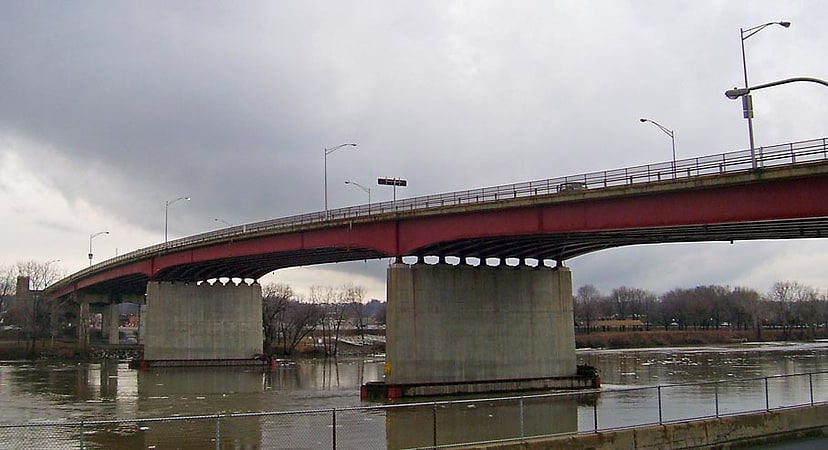
Bridge in Watervliet, New York. The Congress Street Bridge carries NY 2 across the Hudson River connecting Watervliet, New York with Troy, New York.[19]
Watervliet
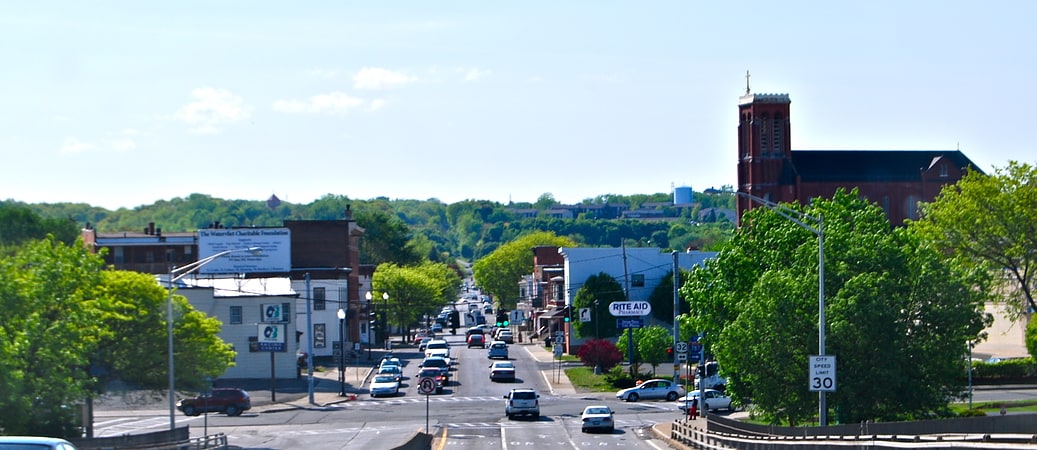
City in New York State. Watervliet is a city in Albany County, in the U.S. state of New York. The population was 10,254 as of the 2010 census. Watervliet is north of Albany, the capital of the state, and is bordered on the north, west, and south by the town of Colonie. The city is also known as "the Arsenal City".[20]